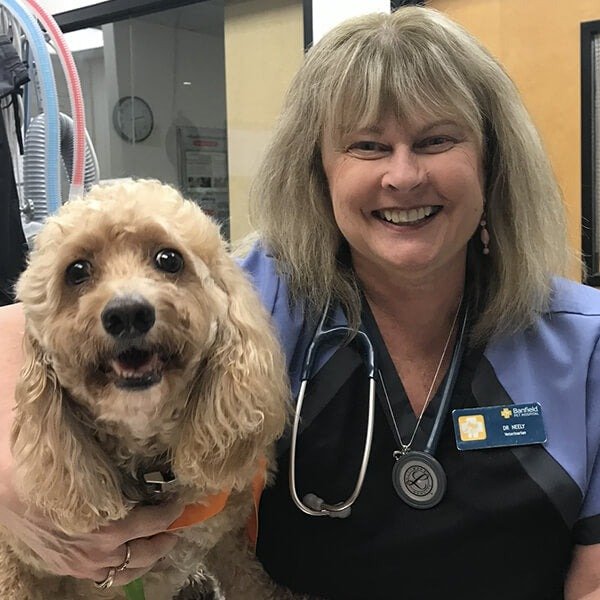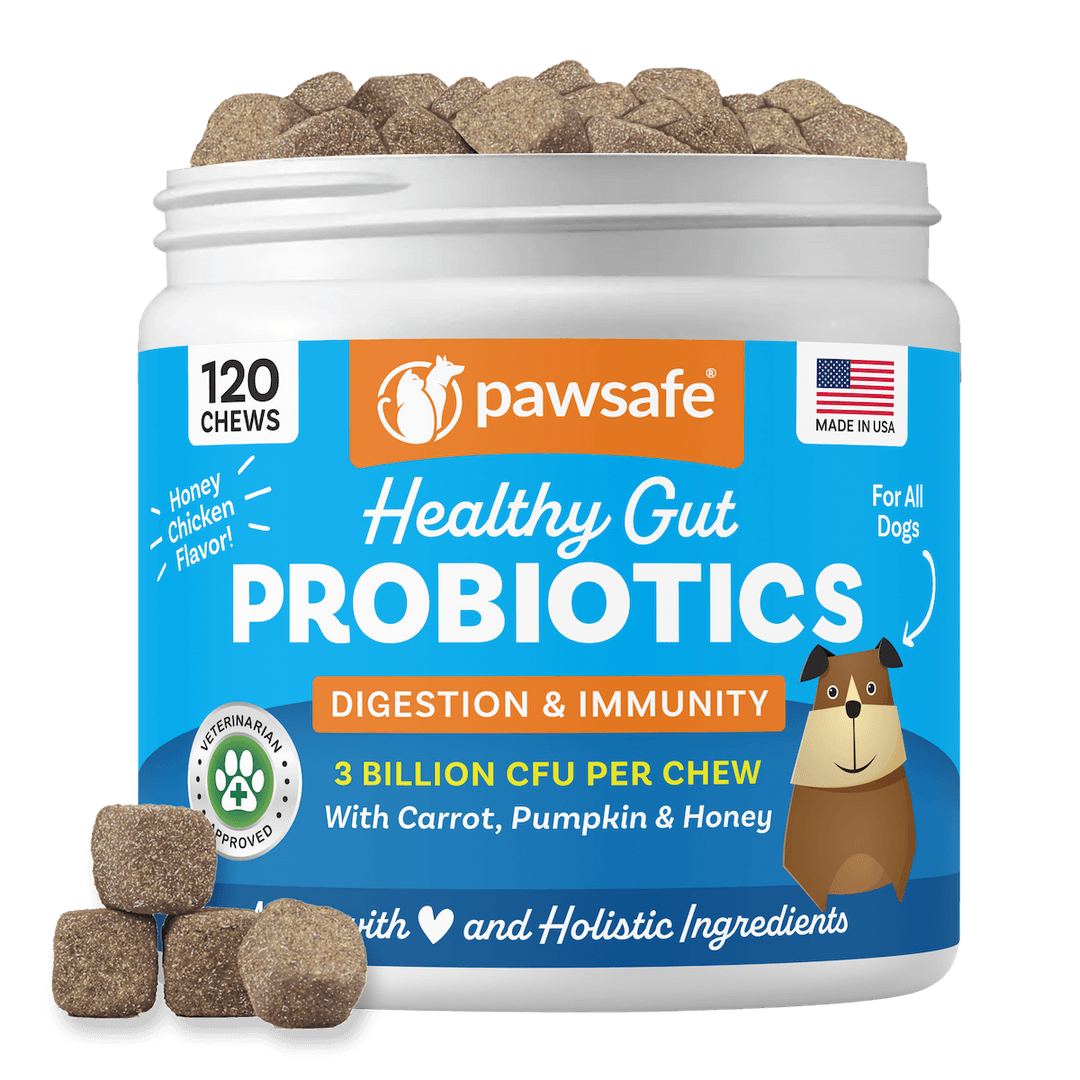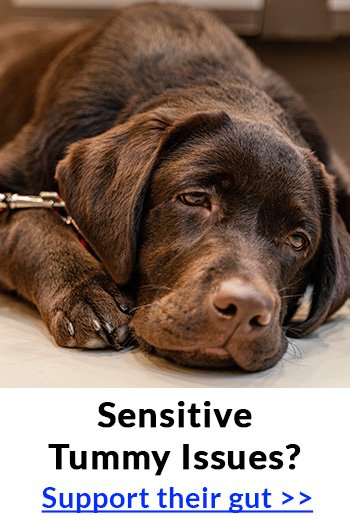
Reviewed & fact-checked by
Shelby Neely, VMD, MA
Veterinarian, Freelance Writer
This content has been reviewed by licensed veterinarians for medical accuracy.

Often, dogs drag their butts (called scooting) brazenly across the floor to relieve itchiness or pain, so are their home remedies for dog scooting?
A single, random case of butt-scooting need not be too worrisome. However, repeated occurrences indicate underlying issues like anal sac problems, constipation, allergies, and skin irritation (or simply a dirty butt!).
The good thing is that the butt-dragging can be remedied at home or eradicated using proper diets and dog probiotics. We’ve covered all you need to know about why dogs scoot and some of the best home remedies for dog scooting.
Table of Contents
- So, Why Do Dogs Scoot?
- 7 Common Reasons Why Dogs Scoot
- What Can I Give My Dog to Stop Scooting? 7 Home Remedies for Dog Scooting
- Pumpkin for Dog Scooting?
- Help! My Dog Has Been Dewormed but is Still Scooting
- How Can I Help My Dog Express His Anal Glands Naturally?
- Foods to Help Dogs Express Anal Glands
- Can I Use Vaseline on a Dog's Bottom?
- Dog Swollen Anus Treatment at Home
- How to Soothe Dog Irritated Anus
- When to Seek Veterinary Help
- Final Thoughts
- References
So, Why Do Dogs Scoot?
Dogs scoot on hard surfaces for relief from itchiness, pain, and discomfort due to clogged anal glands, allergies, vaginitis or skin infections. While many of these issues are resolvable at home, some, like impacted anal glands and internal parasites, need veterinary assistance.
Pets dragging their butt across the floor is far from adorable, and it shouldn’t be since it’s a highly uncomfortable situation for your pooch. Cracking down on the exact reason your dog is scooting equips you to remedy the problem.
7 Common Reasons Why Dogs Scoot
Here’s a list of 7 reasons for the inappropriate butt-dragging in dogs:
1. Anal Gland Problems
Blocked, inflamed and irritated anal sacs are by far the biggest cause of scooting in dogs. All canines have a pair of anal sacs in their rear ends that secrete a fishy fluid released when they poop. This anal sac fluid acts as a biomarker for dogs, helping them identify each other by scent.
When a dog has runny or loose stools for extended periods, their anal glands may not express properly, fill up and then swell. Excessive filling of the anal sacs causes them to become impacted and even infected. In fact, they may burst if left unattended for too long. Anal gland problems cause pain and discomfort, leading to scooting for comfort.
2. Constipation
Difficulty pooping can be painful, causing your dog to scoot to ease the discomfort temporarily. Foreign objects and insufficient fiber in the diet are the biggest causes of canine constipation. White, crumbly poop can also mean that there is too much calcium in the dog’s diet.
You can massage your dog to poop for immediate relief and make lifestyle changes to the diet for long-term solutions.
3. Parasite Infestation
Dragging the bum across the floor can indicate itchiness due to a parasite infection. When parasites like tapeworms exit after maturation, they can cause irritation and itchiness around the anal area. Intestinal worms also cause white specks in your dog’s poop, so seeing those confirms this scooting cause.
4. Allergies
Dogs can be allergic to everyday things like pollen (seasonal allergies) and food, and some experience contact dermatitis. This is an allergic reaction to something they may touch, like lawn fertilizer. Allergies can cause intense itchiness around the bum, and your dog has no choice but to scoot.
Other signs that confirm allergies are:
- Sneezing;
- Swelling around the face or other areas;
- Red, inflamed skin;
- Itchy and runny eyes;
- Frequent ear infections;
- Vomiting; and
- Diarrhea.

Daily Support For Healthy Digestion
Multi-strain probiotic soft chews that help maintain gut balance and stool quality in an easy, tasty format.
Shop Now 👉Vet Approved Formula • 90-Day PawSafe® Promise
5. Vaginitis or Related Issues in Female Dogs
Female dogs, especially puppies, may get a vaginal infection called vaginitis that can cause scooting. They may have vaginal discharge, lick their private parts excessively, and male dogs may show interest in them as if they are in heat.
This condition will normally need antibiotics to clear up, so if you suspect vaginitis, its best to see a vet soon to help relieve your dog’s discomfort
6. Skin Irritation Due to Infections or Grooming
Bacteria and fungi exist naturally in a dog’s skin, but when these microbes get out of hand, your dog will contract infections. Skin infections are uncomfortable, and when dogs scratch to relieve itching, their skin can break, giving leeway to even more bacterial infections like hot spots.
Dogs, especially female dogs, may get yeast infections in their genital areas. This can cause burning and itchiness and result in scooting. So if you see any signs of redness or a rash, be sure to take your dog to the vet.
Dogs that visit the groomer may also scoot their butts because of irritation from grooming products like sprays or perfumes. They can also experience mini cuts, clipper burns, and irritation from their grooming session.
7. Normal Dog Scooting
Sometimes, dogs scoot due to poo and dirt stuck on their bum, making the butt-dragging not too concerning. However, you need to check your dog out if the sticky poo is due to prolonged diarrhea.
Long-haired dogs like Cocker Spaniels and Shi Tzus need regular trimming, including around their rear area, to minimize scooting or feces stuck in the fur.

What Can I Give My Dog to Stop Scooting? 7 Home Remedies for Dog Scooting
Mild scooting in dogs, particularly when not accompanied by other clinical signs, can be resolved at home. Some of these home remedies improve your dog’s digestion, while others provide almost instant relief from butt discomfort.
Seven home remedies for scooting in dogs include:
1. Warm Compress with Water
Applying a warm compress is probably the easiest way to ease anal sac inflammation in dogs. For this remedy, you’ll need to follow these steps:
- Get a bowl of warm water and add about a tablespoon of Epsom salt(optional);
- Soak a clean cloth in water;
- Wring the wet cloth;
- Apply the moist cloth to your dog’s bum for a few minutes; and
- Repeat the process as needed.
2. Manual Expression of Anal Sacs
Since anal gland issues are arguably the biggest cause of scooting in dogs expressing the sacs manually can offer instant relief to your dog. Normal anal glands should be unnoticeable, so if you notice redness and swelling around the area, it’s time to express.
We recommend expressing the glands yourself only if you’re confident in your skill. If the vet has given you the green light, you can express the anal glands by following these steps:
- Ensure you have gloves for the exercise since the fluid can spill on your hands.
- Lift your dog’s tail to expose the swollen sacs. Ensure the dog is in the tab or on an absorbent cloth to prevent a mess.
- Place your fingers at a 4 o’clock and 8 o’clock position on the anus where the anal glands are located.
- Gently squeeze the anal glands, which should feel like plums or peas, depending on the dog’s size.
- A fluid following from the area and reduction in size shows you have successfully deflated the glands.
- Wipe the area with dog wipes or some alcohol.
3. Epsom Salt or Calendula Compresses
Some believe Epsom salt to be a muscle relaxant and even a laxative. Many blogs claim that Epsom salt compresses and baths help a dog in pain, but the truth is that Epsom salt benefits have little proof[1]. For one, the magnesium and sulfate can’t possibly make it past the dog’s skin’s protective barrier.
Calendula, on the other hand, has anti-inflammatory and weak antimicrobial properties that accelerate wound healing. A Calendula compress is beneficial if you notice a tiny injury around the anus that is causing the scooting.

Gut & Immune Support In One Chew
Targeted strains assist normal digestion while supporting natural immune defenses—simple once-a-day routine.
Shop Now 👉Vet Approved Formula • 90-Day PawSafe® Promise
4. Provide More Fiber to the Diet
A fiber-deficient diet is the leading cause of constipation in dogs which can result in scooting. Research has shown that dogs on an all-meat diet are highly likely to become constipated due to not having enough crude fiber in their food.
The best dietary change to eliminate scooting is adding fiber to the diet. Cellulose, psyllium husk, and beet pulp are the primary sources of fiber in dog food. Root and leafy veggies like celery and broccoli are excellent cellulose sources, although you can also use powdered cellulose.
Adding fiber to the diet is delicate as it can cause diarrhea if you use too much, so always speak to a doggy nutritionist first. Insoluble fiber like cellulose decreases constipation, while soluble fiber like psyllium reduces diarrhea. Remember that excess soluble fiber can actually cause constipation, while too much insoluble can cause diarrhea.
Pumpkin can be an excellent remedy for constipation.
5. Increase Water Intake
Adequate water intake helps loosen stool if your dog is constipated and scooting. Hydration is especially crucial for dogs on a dry food diet, where you can choose to alternate with canned dog food to increase water intake. You can also increase water intake by simply adding water to your dog’s dry food.
6. Ensure Daily Exercise
Daily exercise improves digestion when blood is pumped more efficiently to digestive organs. Continued lack of exercise can cause obesity, making it harder for dogs to poop, resulting in scooting.
7. Add Probiotics and Check the Diet For Allergies
Probiotic chews do wonders for dogs with sensitive tummies by balancing gut bacteria. If your dog scoots after eating and sneezes, swells, or turns red, they’re probably allergic to something in their diet. An elimination diet will help determine the best food to feed your dog to alleviate allergy symptoms.
You can also add fish oil to your dog’s food as the essential omega-3 fatty acids help to reduce skin problems and inflammation.
Pumpkin for Dog Scooting?
Pumpkin can be a highly effective natural remedy for dogs with digestive issues, including scooting. As a rich source of both soluble and insoluble fiber, pure pumpkin puree can help regulate your dog’s digestive system in either direction – whether they’re dealing with constipation or diarrhea.
Many veterinarians have observed remarkable results using pumpkin, with some cases showing improvement when other treatments weren’t successful. The fiber content, while moderate, is often just right for helping normalize bowel movements when given in appropriate amounts. As always, consult with your vet for the right dosage for your pet’s specific situation, start with small amounts and adjust as needed after monitoring your dog’s response.
Help! My Dog Has Been Dewormed but is Still Scooting
Deworming removes parasites as a possible reason for scooting, meaning your dog suffers from something else. You can check for an inflamed anal gland or constipation if your dog is still scooting after being dewormed.
Alternatively, your dog may feel itchiness around the bum as the dead worms exit their anus. They will stop dragging their butt after some time if this is the reason.
How Can I Help My Dog Express His Anal Glands Naturally?
The best way to help a dog express their glands naturally is to add fiber and feed them a highly digestible protein-based diet. An improper diet causes diarrhea and constipation, depending on the constituents, which consequently causes blocked anal glands.
Loose stools are a major sign of gastrointestinal upset and can occur when a dog eats a new food. To avoid gut issues, watch for your dog’s reaction to the food closely to decide whether you’ll change the diet. Also, avoid switching food abruptly.
Additionally, increasing your dog’s water intake would be best. You can occasionally add meaty water broth to the food if your dog isn’t too water-motivated. It’s essential to consult your vet on how much fiber to add when helping your pooch express the anal sacs naturally.

Make Digestive Care Effortless
Palatable soft chews your dog looks forward to, helping keep things regular and comfortable over time.
Shop Now 👉Vet Approved Formula • 90-Day PawSafe® Promise
Foods to Help Dogs Express Anal Glands
Fiber-rich foods help dogs with anal gland problems massively by reducing diarrhea and loose stool. These soluble and insoluble food sources increase fiber intake, directly influencing anal gland expression.
Soluble fiber (for diarrhea):
- Oat;
- Apples;
- Carrots;
- Peas; and
- Psyllium.
Insoluble fiber (constipation):
- Wheat bran;
- Whole grains;
- Broccoli;
- Celery;
- Cabbage;
- Pumpkin.
Can I Use Vaseline on a Dog’s Bottom?
Vaseline isn’t toxic to dogs, but it’s not the best choice for canines. Dogs will lick their bum, particularly if it’s irritated, so using this petroleum-based product will cause them to ingest it and possibly in large amounts. Vaseline ingestion can cause stomach upsets, leading to vomiting and diarrhea in dogs.
A better alternative to Vaseline for your dog’s bum is specially formulated dog creams. Others, like castor or zinc creams, can be better for your dog after you consult the vet on their safety.
Dog Swollen Anus Treatment at Home
A swollen anus in dogs is most commonly due to impacted anal glands, but it’s important to note that other serious conditions can cause similar symptoms, including:
- Anal gland impaction
- Tumors
- Rectal prolapse
- Infections
- Other medical conditions
While home treatment with a warm compress can provide temporary comfort, proper diagnosis is essential before attempting any treatment. If you notice your dog has a swollen anus:
-
Use a warm compress for temporary comfort
-
Watch for other symptoms like:
-
Excessive scooting
-
Licking the area
-
Signs of pain or discomfort
-
Consult your veterinarian for proper diagnosis and treatment
Manual gland expression should be done only with experience or vet advice to avoid doing more harm than good.
How to Soothe Dog Irritated Anus
- Use a warm calendula compress on the butt;
- Manually express any impacted anal sacs; and
- Add fish oil to the diet to reduce inflammation.
When to Seek Veterinary Help
Some instances of scooting warrant a trip to the vet, especially if your dog is also vomiting or has diarrhea. A dog refusing to eat, bloody or smelly diarrhea, and weight loss indicate medical issues or parasite infestation, which require medical attention.
Final Thoughts
Scooting or dragging the butt across the floor is not a normal canine behavior. Scooting often indicates anal gland problems, food allergies, constipation, yeast infections, and parasites. Anal gland impaction typically occurs when a dog doesn’t have normal bowel movements, preventing them from releasing anal sac fluid themselves.
Adding fiber to the diet is the best long-term solution for digestive issues that could cause scooting. You can express filled anal glands at home by pressing at them or through a warm compress.
References
- Epsom Salts: The Inconvenient Truth. Udel. https://sites.udel.edu/coe-engex/2017/04/23/epsom-salts-the-inconvenient-truth/







